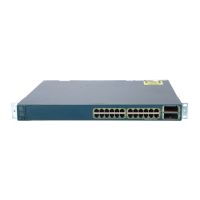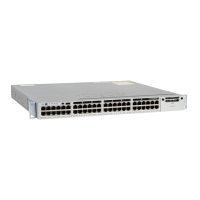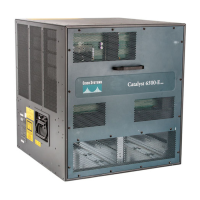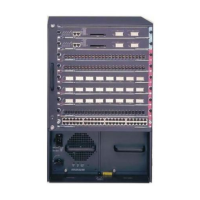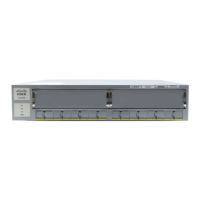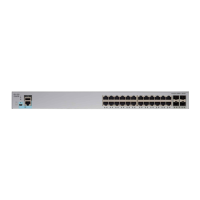1-7
Catalyst 3560 Switch Software Configuration Guide
78-16156-01
Chapter 1 Overview
Features
• Remote Authentication Dial-In User Service (RADIUS) for verifying the identity of, granting
access to, and tracking the actions of remote users through authentication, authorization, and
accounting (AAA) services
• Kerberos security system to authenticate requests for network resources by using a trusted third
party (requires the cryptographic [that is, supports encryption] versions of the SMI and EMI)
QoS and CoS Features
• Automatic QoS (auto-QoS) to simplify the deployment of existing QoS features by classifying
traffic and configuring egress queues (voice over IP only)
• Classification
–
IP type-of-service/Differentiated Services Code Point (IP TOS/DSCP) and 802.1P CoS marking
priorities on a per-port basis for protecting the performance of mission-critical applications
–
IP TOS/DSCP and 802.1P CoS marking based on flow-based packet classification
(classification based on information in the MAC, IP, and TCP/UDP headers) for
high-performance quality of service at the network edge, allowing for differentiated service
levels for different types of network traffic and for prioritizing mission-critical traffic in the
network
–
Trusted port states (CoS, DSCP, and IP precedence) within a QoS domain and with a port
bordering another QoS domain
–
Trusted boundary for detecting the presence of a Cisco IP phone, trusting the CoS value
received, and ensuring port security
• Policing
–
Traffic-policing policies on the switch port for managing how much of the port bandwidth
should be allocated to a specific traffic flow
–
Aggregate policing for policing traffic flows in aggregate to restrict specific applications or
traffic flows to metered, predefined rates
• Out-of-Profile
–
Out-of-profile markdown for packets that exceed bandwidth utilization limits
• Ingress queueing and scheduling
–
Two configurable ingress queues for user traffic (one queue can be the priority queue)
–
Weighted tail drop (WTD) as the congestion-avoidance mechanism for managing the queue
lengths and providing drop precedences for different traffic classifications
–
Shaped round robin (SRR) as the scheduling service for determining the rate at which packets
are dequeued to the internal ring (sharing is the only supported mode on ingress queues)
• Egress queues and scheduling
–
Four egress queues per port
–
WTD as the congestion-avoidance mechanism for managing the queue lengths and providing
drop precedences for different traffic classifications
–
SRR as the scheduling service for determining the rate at which packets are dequeued to the
egress interface (shaping or sharing is supported on egress queues). Shaped egress queues are
guaranteed but limited to using a share of port bandwidth. Shared egress queues are also
guaranteed a configured share of bandwidth, but can use more than the guarantee if other queues
become empty and do not use their share of the bandwidth.
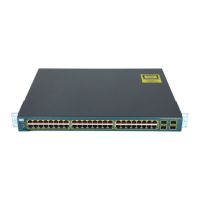
